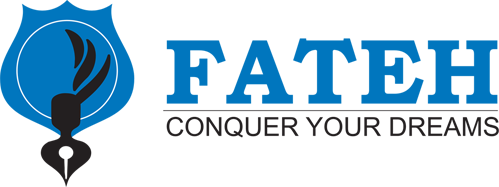Introduction
Chasing a degree overseas can be one of the most transformative experiences in a student’s journey. Yet, for countless aspiring learners, this dream comes with a major hurdle: cost. Between soaring tuition fees, living expenses, travel, and other hidden charges, figuring out how to afford it all can feel just as overwhelming as choosing the right course or university. This is where the decision between a student loan vs. a personal loan steps in—often overlooked, yet profoundly impactful.
At first glance, both seem to offer a way to bridge the financial gap. After all, money borrowed is money available, right? Not quite. While the surface may present them as interchangeable tools, their underlying terms, repayment flexibility, tax implications and long-term financial consequences differ in ways that are not always apparent to most borrowers.
More importantly, your choice doesn’t just influence your ability to pay for university—it can shape your financial independence years into the future. Unfortunately, many students and families rush this decision based on partial information or hearsay, without understanding the implications of opting for one over the other.
And the internet isn’t always helpful either. A quick search on the student loan vs. personal loan debate brings up plenty of surface-level articles. However, few dive into the nuanced realities, like how interest subsidies on education loans work differently for international students, or how collateral requirements can affect approval odds and timelines. Without deeper insight, you risk entering into a financial commitment that may not align with your actual needs.
The goal of this blog is to demystify the differences and give you a thorough, honest look at both options, built on trusted financial sources and expert commentary. Whether you’re heading to Dublin or London, this guide aims to help you make an informed, confident choice.
Understanding Student Loans and Personal Loans
At the core, both student loans and personal loans are borrowing tools, but they are designed with very different goals and borrower profiles in mind.
Student loans, also known as education loans, are specifically tailored to cover the cost of education. This includes tuition fees, exam costs, accommodation, travel expenses and even study materials—especially for those pursuing degrees abroad. They’re offered by banks and NBFCs (Non-Banking Financial Companies) under education loan schemes that often come with certain perks like lower interest rates, flexible repayment terms and moratorium periods. In most cases, the loan repayment only begins after the course is completed and a grace period has lapsed, commonly six months to a year after graduation.
In contrast, personal loans are more general-purpose loans that aren’t tied to a specific end use. You could use them to fund anything—from a wedding to medical bills, or even, as some students consider, education. They’re typically unsecured, meaning you don’t need to pledge collateral and are processed relatively quickly with minimal paperwork. However, they tend to carry higher interest rates and repayments begin almost immediately, regardless of your income status or whether you’re still studying.
The biggest difference lies in their eligibility criteria. For student loans, lenders assess the academic profile of the applicant, the reputation of the institution, the course’s ROI potential and often require a co-applicant—usually a parent or guardian. Collateral may be required for loans above a certain threshold. Personal loans, meanwhile, are granted largely on the basis of your credit score, employment status and income level. This makes them tricky for students to access unless a parent or working professional applies on their behalf.
It’s essential to recognise that the student loan vs. personal loan choice isn’t just about picking the one that gets approved faster. Each has implications on how you plan your finances, manage debt and step into professional life post-graduation. Now that we have a fair idea of what these loans actually are, it’s time to look at how they differ when you place them side by side—across everything from interest rates to repayment flexibility and beyond.
Key Differences Between Student Loans and Personal Loans
Though both student loans and personal loans can cover education expenses, their structures, terms, and ideal use cases vary significantly. Grasping these distinctions is crucial—it ensures your choice supports both your academic ambitions and financial well-being.
1. Interest Rates
One of the most noticeable distinctions lies in interest rates. Student loans typically carry lower interest rates compared to personal loans. As per data from major lenders, student loan interest rates in India usually range between 8.5% and 11.5%, with some public sector banks offering even lower rates under government-backed schemes. These rates can also come with additional benefits such as interest subsidies during the moratorium period, especially for eligible students under schemes like the Central Sector Interest Subsidy Scheme.
On the other hand, personal loans tend to have higher rates, ranging from 10% to over 18%, depending on your credit profile. Since these loans aren’t specifically meant for education, you won’t find any education-related subsidies or tax benefits tied to them.
2. Repayment Terms
Student loans are known for offering generous repayment flexibility. Most lenders provide a moratorium period that allows you to start repayment after completing your course, giving you time to settle into a job. Repayment tenures can stretch up to 15 years in some cases, depending on the loan amount and lender policies.
In contrast, personal loans typically require immediate repayment, with shorter tenures ranging between one and five years. This makes them less lenient for students who may not have a stable income during their course of study.
3. Eligibility Criteria
For student loans, eligibility isn’t just about income—it also takes into account the applicant’s academic performance, the ranking of the institution and the nature of the course. A co-applicant, usually a parent or guardian, is often mandatory. Loans above a certain amount may also require collateral or third-party guarantees.
Personal loans are mostly income-based. Lenders assess your employment status, credit history and repayment capacity. This makes them suitable primarily for working professionals or parents looking to fund their child’s education.
4. Usage Restrictions
Student loans come with specific end-use restrictions. The sanctioned amount can be used only for education-related expenses—like tuition, accommodation and travel. Lenders require documented proof of these expenses during disbursal.
Personal loans are far more flexible. Once the loan is approved, you’re free to use the funds as you see fit. This freedom can be helpful in situations where education costs extend beyond what’s covered under standard categories. However, this flexibility also comes with less structure and fewer borrower protections.
The nuances between a student loan vs. personal loan extend well beyond just who can apply or how quickly funds are disbursed. Each type of loan has a very different financial rhythm and selecting the right one could make your post-study life significantly smoother.
Having explored the key differences, the next step is to evaluate the unique advantages and limitations of each financing option—starting with student loans and their distinct features.
Pros and Cons of Student Loans
Student loans can be a lifeline for academically ambitious students facing financial hurdles. But as with any borrowing decision, they come with their own set of advantages—and trade-offs to consider.
Pros
1. Tailored for Education
Student loans are designed specifically to fund higher education, whether in India or abroad. This means they’re structured with academic timelines in mind, including coverage for tuition, living expenses and sometimes even health insurance or laptop costs.
2. Moratorium Period
One of the most student-friendly features is the moratorium—usually the course duration plus six months to a year—during which you are not required to begin repayment. This gives students time to complete their studies and find employment.
3. Lower Interest Rates
Compared to personal loans, student loans usually come at a lower cost. Banks often offer concessional rates for women borrowers or those admitted to top-ranked institutions.
4. Tax Benefits
Section 80E of the Income Tax Act allows tax deductions on the interest paid towards education loans, which can translate into meaningful savings post-graduation.
Cons
1. Complex Eligibility Criteria
Loan approval depends on the course, institution and co-applicant’s financial profile. For loans above ₹7.5 lakh, collateral is often mandatory, making the process more layered.
2. Limited Flexibility
Funds can only be used for pre-approved academic expenses. If your costs fall outside the defined categories, you may need additional financing.
3. Debt Burden Post-Study
Although there’s a repayment holiday, interest still accrues during the moratorium. Many students underestimate this and face higher-than-expected EMIs once repayment begins.
When weighing student loans against personal loans, many students—especially those planning to study abroad—find student loans offer distinct benefits. But before committing, it’s worth considering whether their stricter terms and paperwork demands fit your specific situation and goals.
Many students stop at student loans when planning their education funding. But there’s another path worth exploring – let’s examine what personal loans bring to the table.
Pros and Cons of Personal Loans
While student loans remain the traditional route for education financing, personal loans are increasingly becoming a viable alternative for students, particularly when conventional education loans prove inaccessible or restrictive. However, they come with their own set of considerations.
Pros
1. Quick Disbursal with Minimal Paperwork
Personal loans are typically approved and disbursed much faster than education loans. The process is largely straightforward, often requiring minimal documentation, which is especially useful for last-minute tuition payments or unforeseen academic expenses.
2. No Usage Restrictions
Unlike student loans, personal loans offer complete flexibility. The borrowed amount can be used not only for tuition but also for accommodation, travel, gadgets or any academic resource. This makes them particularly handy when expenses don’t fall neatly into education loan categories.
3. No Collateral or Guarantor Required
Most personal loans are unsecured, meaning students or parents do not need to pledge property or provide a guarantor. This reduces risk for borrowers with limited assets.
Cons
1. Higher Interest Rates
One of the biggest downsides is the cost. Personal loans generally carry higher interest rates than student loans, which can significantly increase the total repayment burden over time.
2. Immediate Repayment
There is usually no moratorium period. Borrowers must start repaying the EMI as soon as the loan is disbursed, which can be challenging for students who haven’t started earning yet.
3. Credit Profile Dependence
Loan terms are heavily tied to the applicant’s creditworthiness. Students with limited or no credit history often face rejection or higher rates, especially if applying independently.
When comparing a student loan vs. personal loan, it becomes clear that personal loans can offer more freedom, but that freedom often comes at a financial cost. This makes it even more important to weigh the broader decision through a practical lens.
Choosing the right loan isn’t just about interest rates or application speed. It requires a careful look at your academic goals, repayment capacity and long-term plans. Let’s now explore the key factors that can help you make a more informed decision.
While student loans remain the traditional route for education financing, personal loans are increasingly becoming a viable alternative for students, particularly when conventional education loans prove inaccessible or restrictive. However, they come with their own set of considerations.
Factors to Consider When Choosing Between the Two
Deciding between a student loan and a personal loan isn’t just a financial decision — it’s a strategic one. The right choice depends on several nuanced factors that go beyond just comparing interest rates or loan amounts.
1. Financial Need and Loan Size
If you’re funding a full-time degree, especially overseas, the overall costs are likely to be significant. Student loans are designed with these needs in mind and usually offer larger sanctioned amounts. Personal loans, on the other hand, may have lower upper limits and could fall short when covering full tuition and living expenses combined.
2. Repayment Capacity
One of the key differences in the student loan vs. personal loan discussion is repayment flexibility. Student loans usually allow you to start repayment after course completion, while personal loans demand immediate EMIs. This makes student loans more forbearing for those without a steady income during their studies.
3. Long-Term Financial Goals
Consider how each loan aligns with your career plans. If you expect a significant earning potential post-graduation, taking a higher loan amount with a longer tenure may be justified. Conversely, if you plan to transition into a lower-paying but passion-driven field, lower EMI commitments may take precedence.
4. Credit Profile and Collateral
Personal loans heavily depend on credit history, which may not be ideal for younger students with limited financial footprints. Student loans often allow a co-applicant model, spreading the risk and easing approval.
Choosing between a student loan vs. a personal loan ultimately comes down to your academic ambitions, financial stability and long-term goals. Up next, let’s help you reach a final decision with a practical summary.
Conclusion
As a student, your loan decision requires careful thought. We’ve examined how these options vary—from interest rates to how you’ll pay them back. While student loans are designed for your needs, personal loans offer quick cash with different strings attached.
Ultimately, the student loan vs. personal loan choice hinges on your financial readiness, career trajectory and support system. Ask yourself what you truly need, how soon you can repay and whether the structure of each loan aligns with your future goals. By weighing these factors carefully, you’ll be better placed to choose the option that supports your education without compromising your financial health.
Your study abroad adventure shouldn’t be derailed by loan confusion. At Fateh Education, we craft financial plans that align with your dream degree and career ambitions.
Our experts look beyond interest rates—we match you with funding that fits your degree, finances, and future plans. Stuck comparing options? Need help applying? We’ve got you covered.
Take the next step—schedule a free consultation today and secure your path to global education.
Frequently Asked Questions (FAQs)
Yes, a personal loan can be used to cover education costs, including tuition, accommodation and living expenses. However, it lacks the education-specific benefits of a student loan, such as lower interest rates and flexible repayment options.
Student loans generally offer better repayment terms. These may include longer tenures, moratorium periods during study and income-based repayment plans — features not typically available with personal loans.
Yes, refinancing a student loan with a personal loan is possible, but it's rarely advisable. You might lose borrower-friendly benefits like deferred payments or lower interest rates that student loans usually offer.
Student loans usually come with lower interest rates, especially those offered by public sector banks or backed by government schemes. Personal loans tend to have higher, risk-based rates due to their unsecured nature.


